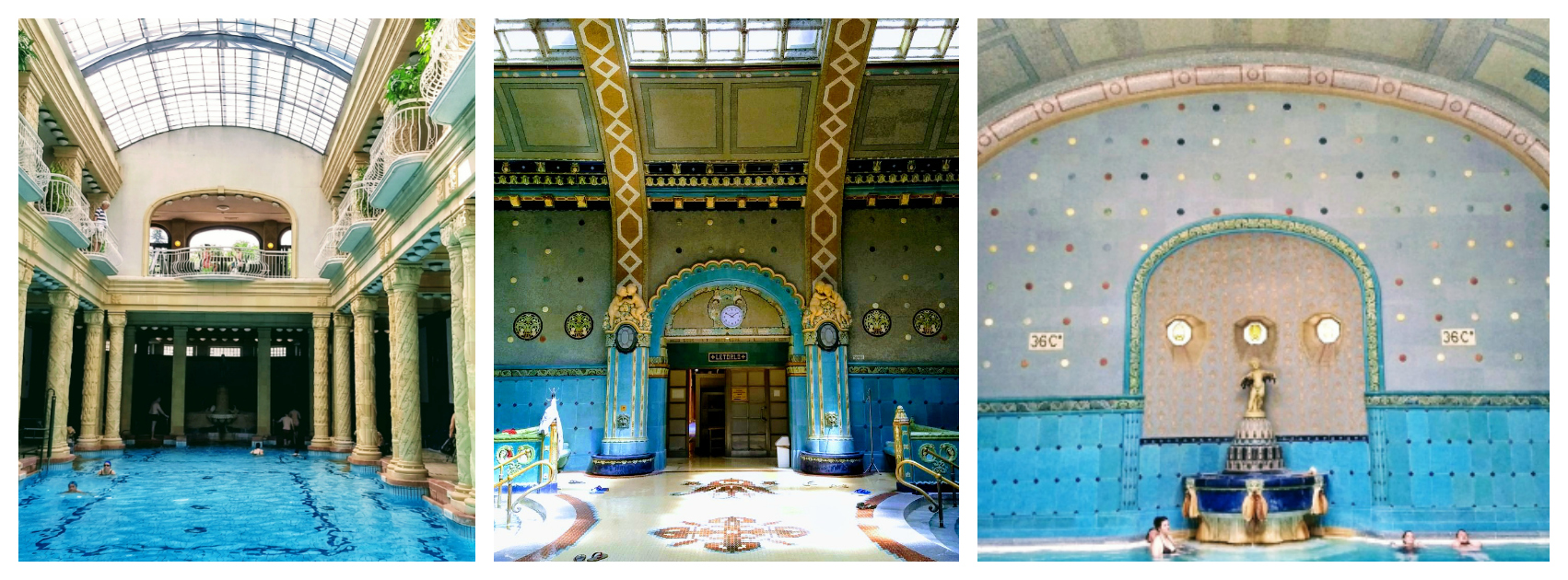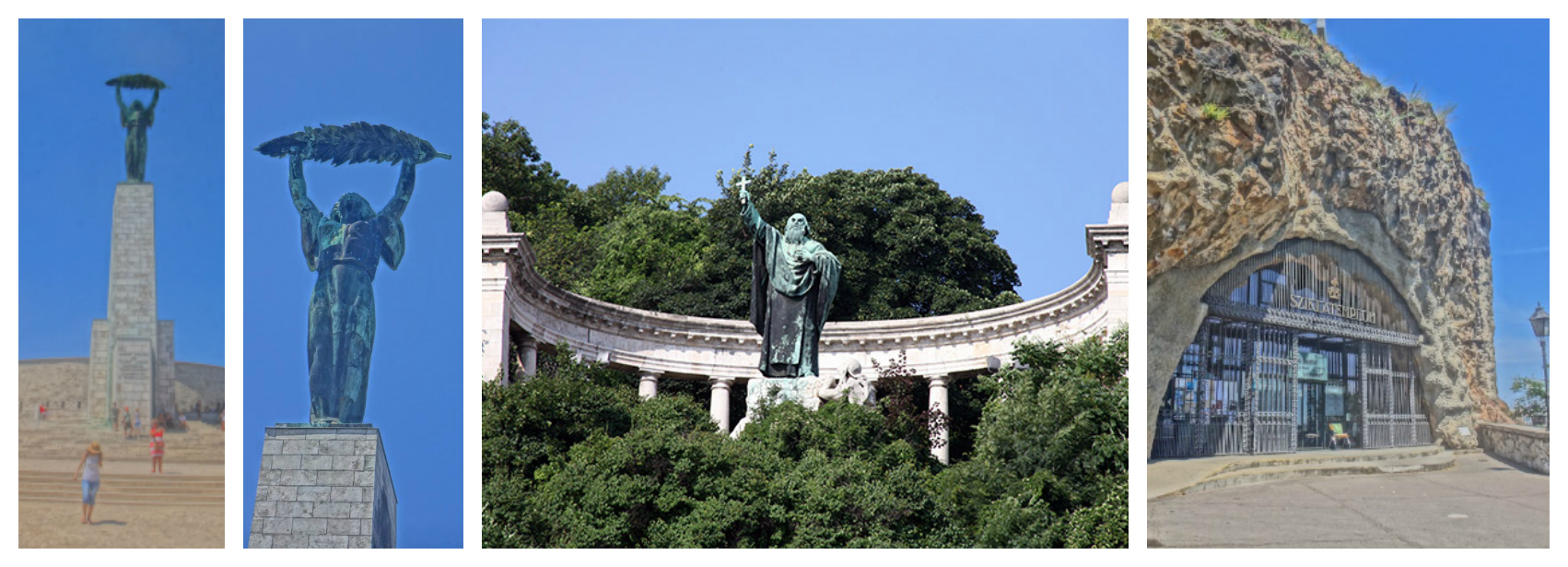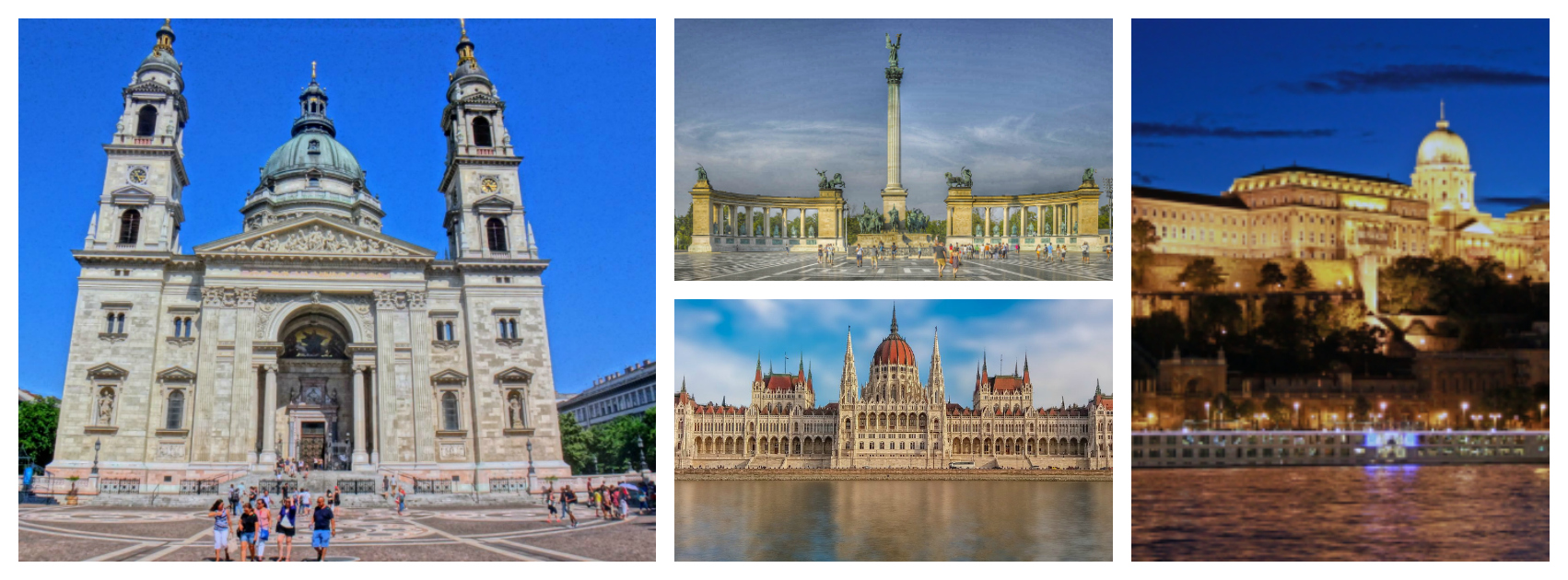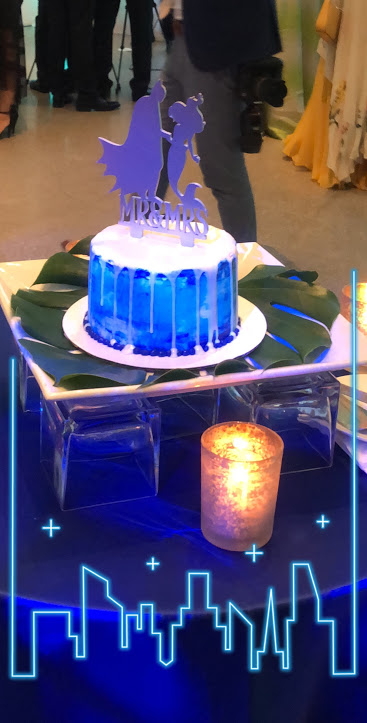We just returned from our annual family vacation, and boy did we have a good time. We went all over the place, starting off with a couple of days in Budapest (Hungary), with quick stopovers in Bratislava (Slovakia) and Vienna (Austria). Then we hopped across the continent to visit the southern Algarve region of Portugal, followed by a car ride to Seville (Spain).
Like always, to keep this post as clean and crisp as possible, I will focus on the places we spent the most time in: Budapest & Algarve.
Today’s post is dedicated entirely to Budapest, and next week I’ll cover Algarve.
Let’s jump right in. After reuniting with the family at the Budapest airport, we spent more than 30 minutes in line waiting to catch a cab. Our hotel was conveniently located right in the center of the city. Over the next few days, we thanked our lucky stars because being centrally located allowed us to do and see sooo much more. The name of the street we stayed on was Váci Utca and I’d strongly recommend finding a hotel on or around it.

Large parts of the center are pedestrian only, and hence make for a great place to spend time. Apart from the frequent tour providers trying to get you to sign up for their tours and forcing you to “try” their Segway, we really enjoyed Budapest. Most of the pedestrian areas are lined with all kinds of shops (brands, chains, souvenirs, local trade, etc.).
There is certainly no shortage of restaurants either. Since this is a heavily tourist area, beware of restaurants that get away with serving horrible food and charging high prices. I’d recommend you look them up on TripAdvisor before entering. I must admit that the city center seemed to be overrun with tourists, and has perhaps lost some of its charm. However, given that travel and tourism contributes over 11% to the country’s GDP and is expected to rise, it doesn’t surprise me.

The Budapest that we know it today was originally composed of 2 cities-Buda & Pest that were combined into a single city in 1873. We mostly walked everywhere, but I’d also recommend using public transportation which includes a very good network of buses, trams and a very comfortable underground metro.
Here are some sight-seeing & activity recommendations, ordered by my personal favorites:
Gellért Baths: Originally built between 1912-1918, the complex was damaged during the Second World War and rebuilt. The complex contains a number of pools, saunas, and wellness related services. The entire facility, although old, is built-in an art-nouveau style. I’m certain I can’t do justice when describing the splendor of this place, but I’m going to try. From the moment you enter, the grandeur hits you straight in the face. The imposing high ceilings, the beautiful fountains, the mosaic tiles on the walls and the floors, the statues, the colors, every single thing here astounds with its majesty and magnificence. The closest comparison I can think of is bathing in a cathedral.

The thermal waters contain calcium, magnesium, hydro-carbonate, alkalis, chloride, sulfate and fluoride. The properties of the water are said to help with various conditions like joint illnesses & inflammation, spine problems, vertebral disk problems, etc. The temperature of the water is between 35 °C and 40 °C. In fact, references to the healing properties of the mineral hot springs at this location can be found dating back to the 13th century. If you visit Budapest, this place is a must visit and should be at the very top of your list.
The Liberty Statue: Built in 1947 at the top of Gellért hill, it commemorates those who sacrificed their lives for the independence, freedom, and prosperity of Hungary.
The Gellért Monument: Built in 1904 in honor of the 11th century bishop St. Gellért who converted the Magyars to Christianity. Below the memorial is a man-made waterfall. Legend has it that Gellért was put to death by pagans at this spot by putting him in a barrel and rolling it down the steep Gellért Hill and eventually into the Danube River.

Cave Church: Part of a network of caves within the hills, it is often referred to as St. Ivan’s cave. St. Ivan was a hermit that who lived there and is believed to have used the natural thermal water from a muddy lake next to the cave to heal the sick. It is likely that this same water fed the pools of the old Sáros fürdő (“Muddy Baths”), now called Gellért Baths.
The church has an interesting history and was sealed with a thick concrete wall by the Soviet Red Army in 1951. It wasn’t until the fall of the former Soviet Union in 1989 that the wall was brought down and the church restored.
Hungarian Parliament: Completed in 1904, it is the largest building in Hungary, and the tallest in Budapest. About 100,000 people were involved in its construction, during which 40 million bricks, half a million precious stones and 40 kilograms of gold were used. Interestingly the architect went blind before it was completed, never being able to see his completed work.
Heroes’ Square: Completed in 1900, this it is one of the major squares of Budapest and includes a number of grand statues of past leaders, and among other things the Tomb of the Unknown Soldier. Although the square itself is very large and magnificent, it didn´t quite live up to my expectations. As a European square, I was expecting it to be filled with life, lots of people and cafes. However, all we found there were parked buses, empty beer cans, and rowdy tourists. Although I wouldn’t recommend penciling in spending too much time there, I would recommend paying it a visit.

Others: Gellért Hill, St. Stephen’s Basilica, Buda Castle, Night cruise on the Danube River
All in all, we spent a wonderful 3.5 days in Budapest, but I’d recommend going with 4-5 days in hand to really get to know the city and try everything it has to offer. Food, accommodation, transport and shopping are relatively cheap compared to Western Europe, which is a good thing ‘coz your money goes further.
Next week, we’ll take a look at the Algarve region of Portugal.


































 Summer vacations are my favorite time of the year. We usually travel to some exotic destination in Europe with the family and spend some quality time bonding. This year though, we broke with tradition.
Summer vacations are my favorite time of the year. We usually travel to some exotic destination in Europe with the family and spend some quality time bonding. This year though, we broke with tradition.














 hours of sunlight accompanied by rising temperatures. The body naturally reacts to this change in external stimuli by raising the core temperature, thereby dilating blood vessels and causing a resulting drop in blood pressure. The body also reacts at the hormonal level, causing the release of more serotonin, the activity hormone. All these changes throw our body’s rhythm off-balance.
hours of sunlight accompanied by rising temperatures. The body naturally reacts to this change in external stimuli by raising the core temperature, thereby dilating blood vessels and causing a resulting drop in blood pressure. The body also reacts at the hormonal level, causing the release of more serotonin, the activity hormone. All these changes throw our body’s rhythm off-balance.




















